Search the Special Collections and Archives Portal
Search Results
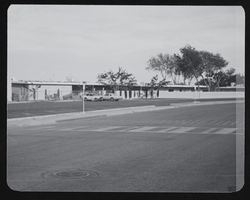
Southeast view of Red Rock Elementary School: photographic print
Date
Archival Collection
Description
Image
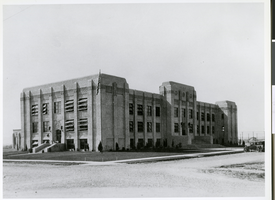
Photograph of Las Vegas High School, Las Vegas, 1930
Date
Archival Collection
Description
Image
University of Nevada, Las Vegas School of Nursing Records
Identifier
Abstract
The University of Nevada, Las Vegas School of Nursing Records (1950-2019) contain records documenting the history of the UNLV School of Nursing. The materials include records from the nursing school's Alumni Association, including financial reports, bylaws, correspondence, and membership information; recruitment materials from the School of Nursing, including brochures, photographs, and program requirements; history of the School of Nursing, including photographs, newspaper clippings, a short summary of the program, and a short documentary film comprised of digital video files; and accreditation information, including newspaper articles, accreditation reports, and evaluations of the program from the Nevada State Board. The materials also include nursing student uniforms, caps, and nursing capes from the 1950s and 1960s.
Archival Collection
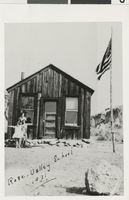
Photograph of Rose Valley School, Lincoln County, Nevada, 1931
Date
Archival Collection
Description
Image
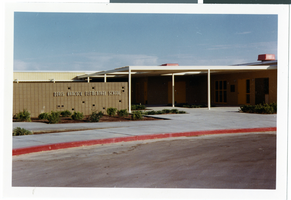
Photograph of Doris Hancock Elementary School, Las Vegas, 1965
Date
Archival Collection
Description
Image

Photograph of Vegas Heights Elementary School, Las Vegas, circa 1940s
Date
Archival Collection
Description
Image
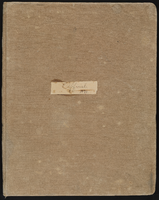
Fort Mojave Industrial School correspondence, administrative and financial information
Date
Archival Collection
Description
From the Fort Mojave Indian School Records (MS-00034). The records of the Fort Mohave Industrial School consist of two bound books of correspondence and cover the years 1890-1893. The second book contains press-copies of letters written by the school's superintendent Samuel McCowan in reply to Commissioner of Indian Affairs Thomas J. Morgan's and Assistant Commissioner R.V. Belt's letters to people doing business with the school. All letters that are direct responses include the identification number of the first letter and can therefore be matched with appropriate correspondence in the first book. While the binding is in excellent condition, many pages are missing and a good number of letters are too faint to read. Yet, the originals of these letters can be found in the National Archives and Record Services microfilmed collection titled Letters Received by the Office of Indian Affairs, Arizona Superintendency. The letters in this book relate to finance, policy implementation, annual reports, school functions, curriculum, school employment, and census data. Financial information includes: itemized accounts of all foodstuffs such as livestock and grains, and materials supplies purchase for the school such as lumber, farming implements, seeds, fruit tress, clothing, medicine, blankets, and furnishings. Also related to financial matters are requests for travel reimbursements for recruiting trips, the placing of ads in newspapers to solicit bids from suppliers, and accounts for salaries paid to school personnel. Administrative information includes annual reports of the number of students in the school. They reflect the difficulties McCowan encounters from parents in his recruiting efforts and his solutions to these problems, such as withholding food rations from families and hosting feasts at the school to lure families in. Other administrative materials include reports on the location and condition of Indian bands, which include the names of prominent band leaders and McCowan's observation of cultural rituals, his survey of the surrounding land and its suitability for farming, blue prints for the schools irrigation projects, and reports on problems between encroaching whites and resident Indians. Policy information includes reports from McCowan on his efforts to comply with Bureau of Indian Affairs educational policies and guidelines, reports on how school personnel are implementing the curriculum and the types of supplies used to accomplish this, and queries from McCowan on whether to hire students out to nearby whites as wage laborers. During scanning, the readability of the pages has been enhanced. The original manuscript has missing pages.
Text

Photograph of school children with hats on, Pahrump (Nev.), September 26, 1954
Date
Archival Collection
Description
Image
Panaca Elementary School and Lincoln County High School first graduating class, undated
Level of Description
Archival Collection
Collection Name: Elbert Edwards Photograph Collection
Box/Folder: N/A
Archival Component
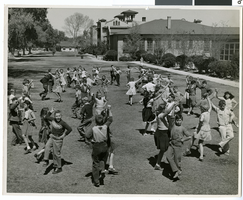
Photograph of school children dancing, Las Vegas (Nev.), late 1930s
Date
Archival Collection
Description
Image
